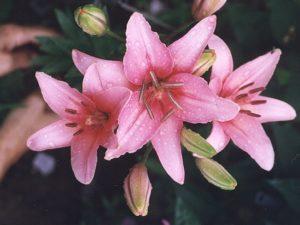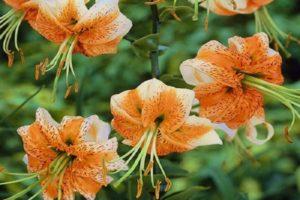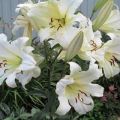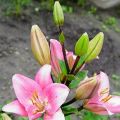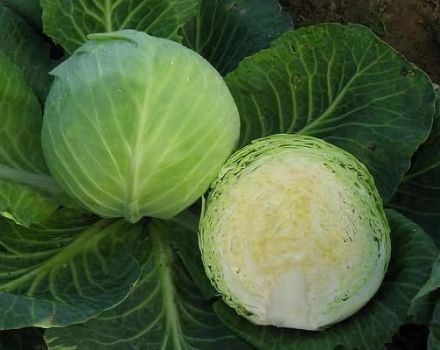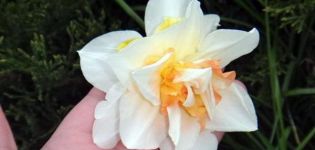Description and characteristics of varieties of bush lilies, planting and care in the open field
Bush lily is rather a folk name, not a botanical one. In nature, such flowers do not exist, and lush bushes of lilies are obtained through a certain method of growing. However, not all varieties and varieties are suitable for creating lily bushes. Spectacular plants become the centerpiece of the entire garden composition and attract rapturous glances throughout the flowering period. There is nothing difficult in planting and growing bush lilies, so even a beginner in floriculture can handle the process.
General description of bush lilies
All varieties of lilies belong to the same Liliaceae family, this perennial plant has been considered a symbol of beauty since ancient times. The name of the flower is translated as whiteness. Indeed, the first specimens of the culture were snow-white, and only later did they begin to breed flowers with different colors of petals. The bulbous plant has green glossy leaves and flowers that resemble bells. The most fragrant are long-flowered and oriental hybrids.
Popular varieties
To get a lush lily bush, opt for one of these varieties:
- Curly hybrids. This category includes about 200 varieties, the main ones are grown in the territory of Central Asia, but suitable specimens can also be selected for the climatic conditions of Russia. Gardeners are encouraged to pay attention to 2 varieties: Claude Shride and Slates Moning. The first one stretches up to 2 meters in height and blooms with bells with dark red petals. The second does not exceed 90 cm in height and has a yellowish tint of petals. For all curly hybrids, shaded areas are the preferred planting site. It is necessary to immediately correctly determine the location, since this species does not like transplants.
- Asian hybrids. These hybrids were obtained in the process of crossing 9 species of lilies and include about 300 varieties. The height of Asians ranges from 30 centimeters to 1 meter. A characteristic feature of all varieties of this group is the absence of odor. Flowers are unpretentious to growing conditions, frost-resistant and are rarely exposed to diseases and pests. The most popular representatives suitable for growing in the middle lane include: New Cento up to 85 cm high with yellow-green petals; Aaron with white-yellow double petals; Mapira with black and burgundy flowers.
- Interspecific hybrids. This group includes varieties that cannot be ranked as a specific species. These are East Asian, tubular and leafy-oriental hybrids. The brightest representative is considered to be the Pretty Vumen variety up to 180 cm high with a white-yellow shade of petals.
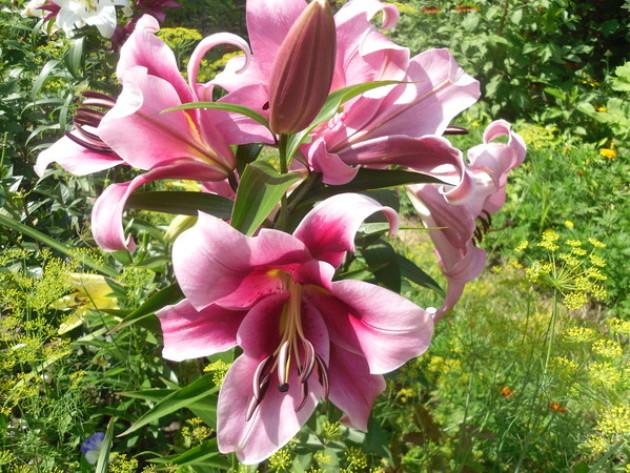
Advantages and disadvantages
Before starting the process of growing bush lilies, all the positive and negative qualities of the culture are studied. The benefits of such plants include:
- Spectacular appearance thanks to the volume and number of colors.
- The presence of a bright and pleasant aroma in many varieties.
- No need for frequent transplants.
- A simple breeding method.
Among the disadvantages of culture:
- Demanding to the quality of the soil.
- The need to install supports for tall varieties.
- The occurrence of fungal diseases with illiterate care.
- The need for insulation for the winter of certain varieties.
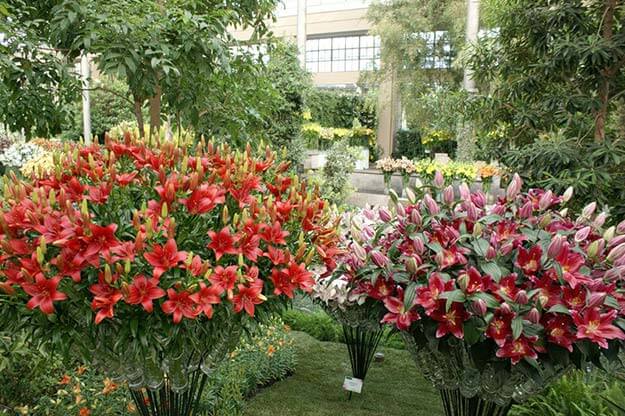
Features of growing such flowers
Before starting the process, they are determined with a suitable place, prepare the soil and material, and only after that they start planting bush lily bulbs.
Site selection
The soil for growing bush lilies should be moderately loose and fertile. Most varieties prefer open areas, but can also thrive under light shade. Dry soil and areas with excessive moisture are equally harmful to lilies. If tall hybrids are grown, it is necessary to protect them from drafts and strong gusts of wind that damage the plants. Therefore, the site is chosen near buildings or trees.
Soil preparation
The soil for planting lilies is prepared in the fall. The site is dug up, weed roots are removed and fertilizers are applied. In the spring, immediately before planting the bulbs, the soil is again loosened to the depth of planting lilies. If the soil is clayey, sand and peat chips are added to improve air and water permeability.
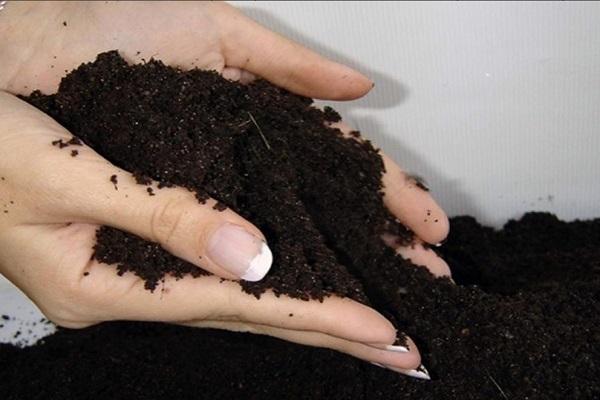
Planting bush lilies
The technology of the planting process depends on the chosen method and the available seed material:
- Some gardeners use seeds for planting, but such flowers will delight with their appearance not earlier than in 5 years.
- It is much easier to use for planting lily bulbs. They are purchased at specialized retail outlets and kept for about half an hour in a weak manganese solution.
The planting depth of the bulbs depends on the variety; this parameter, as a rule, is indicated in the description. Experienced gardeners find a preferred depth three times the height of the bulb. After the completion of the process, it is recommended to mulch the root space with humus or peat. This procedure allows you to maintain the required amount of moisture in the soil and prevent the germination of weeds.
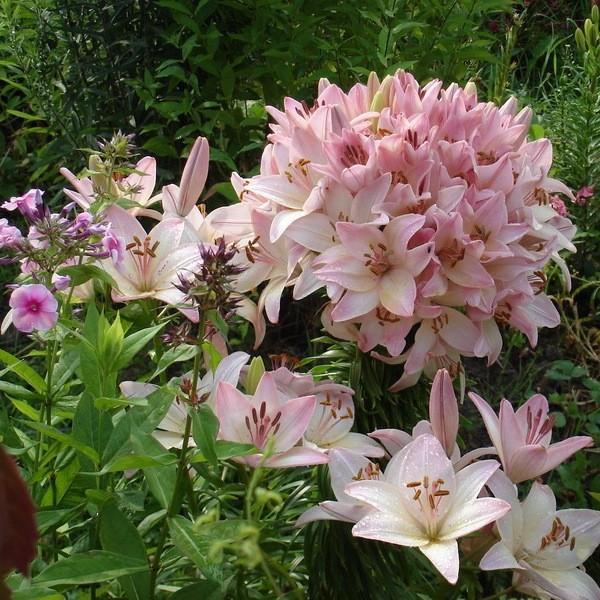
How to properly care for a plant
Outdoor care for bush lilies is reduced to watering, feeding, weeding and protective measures against diseases and insects. In cold regions, preparing the plant for winter is added to this list.
Watering and feeding
Moistening a bush lily is carried out only during a period of severe drought or when the soil dries out. The plant does not need abundant watering, excess moisture becomes the cause of the development of fungal diseases and rotting of the bulbs. Watering is carried out either early in the morning or in the evening when the heat subsides. It is unacceptable to spray lily leaves in the middle of the day - this will lead to burns.
The first fertilizer is applied immediately before planting, during the preparation of the soil.
For this, peat and humus are used, but fresh manure is destructive for lily bulbs. The next top dressing is applied when the green shoots are at least 12 cm from the soil level. Use 30-40 grams of nitrogen fertilizer dissolved in a bucket of water. This volume is enough to feed 1 sq. meter of plantings.
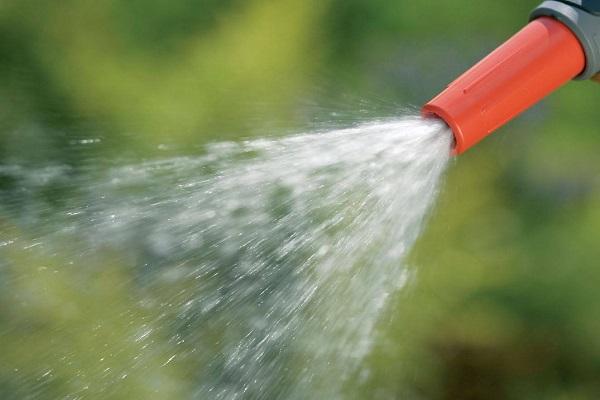
After another 2 weeks, after the process of loosening the soil, add nitrophosphate, using 1 sq. meter 50 grams of substance. At the stage of bud formation, a top dressing of 10 g of potassium salt and the same amount of superphosphate is used, which are dissolved in a bucket of water. And the last feeding is carried out after the buds have faded - mineral compositions are used in liquid form. Also, it will not be superfluous to sprinkle the root space with wood ash at the beginning of summer - this is not only a useful component for lilies, but also the prevention of fungal diseases.
Preparing for the winter period
Warming for the winter period depends on the variety planted. Some species are more frost-resistant, others less; all information about these characteristics is presented in the description of the varieties. If the flowers are cold-resistant, it is enough to cut off the stems and throw dry foliage on top. If the variety does not withstand frosty winters, a cover of spunbond or agrospan is built on top. You can also use spruce branches.

How to protect flowers from diseases and pests
Bush lilies occasionally damage viral and fungal diseases and pests:
- Viral diseases. They are considered the most dangerous, as they damage not only lilies, but also quickly spread throughout the entire site. Most often, gardeners are faced with the tobacco and cucumber mosaic virus. The first signs of damage are considered yellowing of the foliage, which later looks more and more lethargic and begins to curl. In order to prevent the spread of viruses, immediately cut off the affected leaves using a disinfected tool. Places of cuts are treated with crushed tablets of activated carbon.
- Fungal. They appear when the irrigation mode is incorrect and the area is not ventilated. First of all, a white bloom resembling moss appears on the stems, if you do not respond to this symptom in time, the bulb is affected, and the plant dies. When signs of fungus appear, lilies are treated with any fungicidal preparation once a week until the culture is fully recovered.
- Of the insects on lilies, aphids and lily beetles are most often found. If there are not many pests, they manage with the use of folk remedies - infusion of nettle, garlic, red pepper, green soap, wiping the leaves with an alcohol solution of weak concentration. In the case when the insects had time to breed, one cannot do without the use of acaricidal preparations - "Aktara", "Aktellik".

Breeding methods
Several proven methods are used to breed lilies on the site:
- Dividing the nest of bulbs.
- Branch of daughter bulbs.
- Using scales.
- Seed method (rarely used due to the length of the process).
Examples of use in landscape design
By themselves, lilies become the center of the composition, so less bright plants that emphasize the beauty of exotic beauties are picked up in their neighborhood. For example, use low-growing herbaceous perennials. The mix of lilies and irises looks interesting, but the flowers have different requirements for care, which must be foreseen in advance.
